-
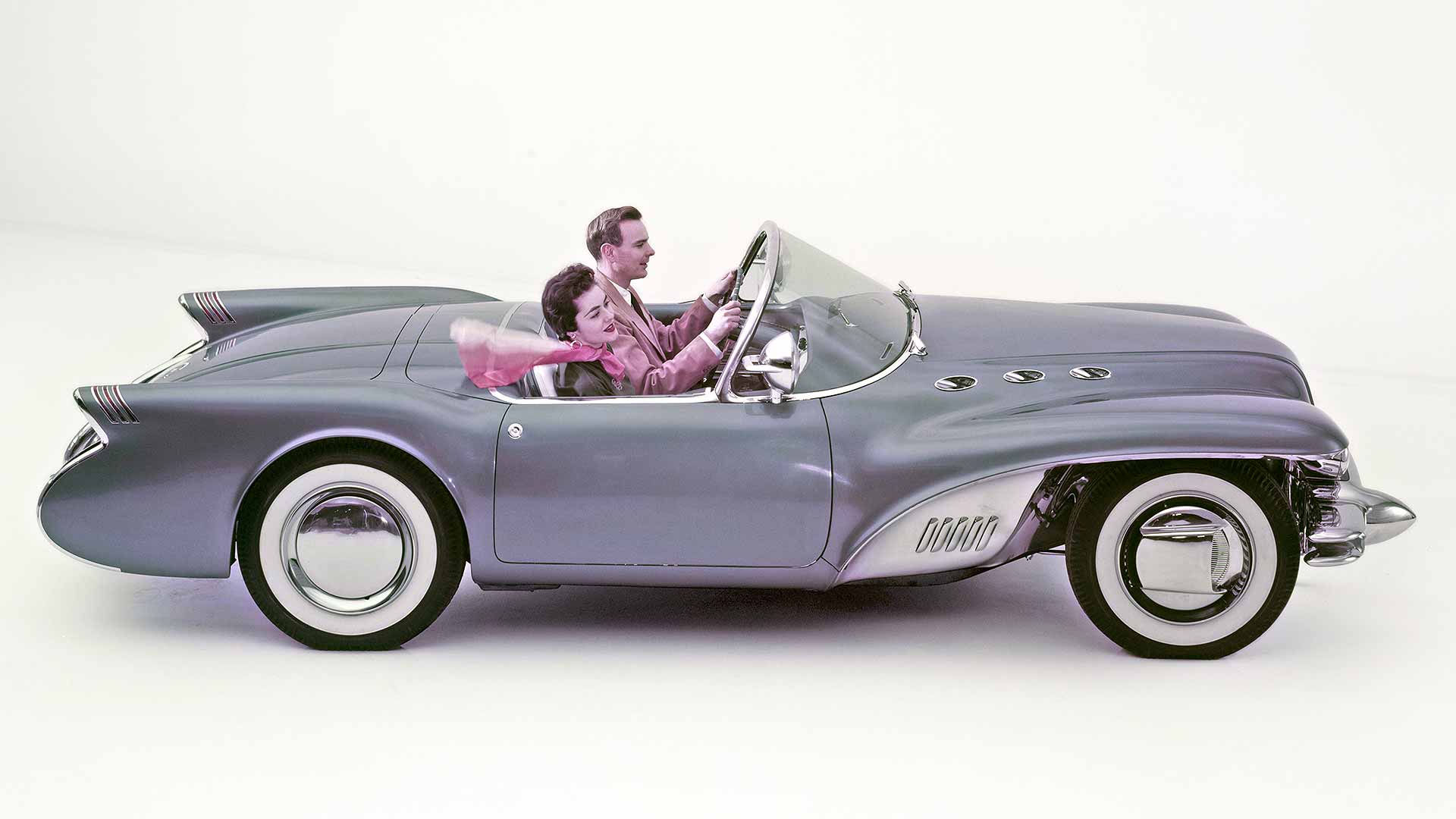
Wild and Wacky GM Concept Cars
© GMGeneral Motors launched many dream cars in the Fifties and Sixties, but none were as fanciful as the company’s wild concept vehicles. They were designed to explore possibilities and futures unknown, rather than just showcase upcoming consumer products. A few wild visions even made it to production, such as the Corvette.
These are but a few of our favorites.
-
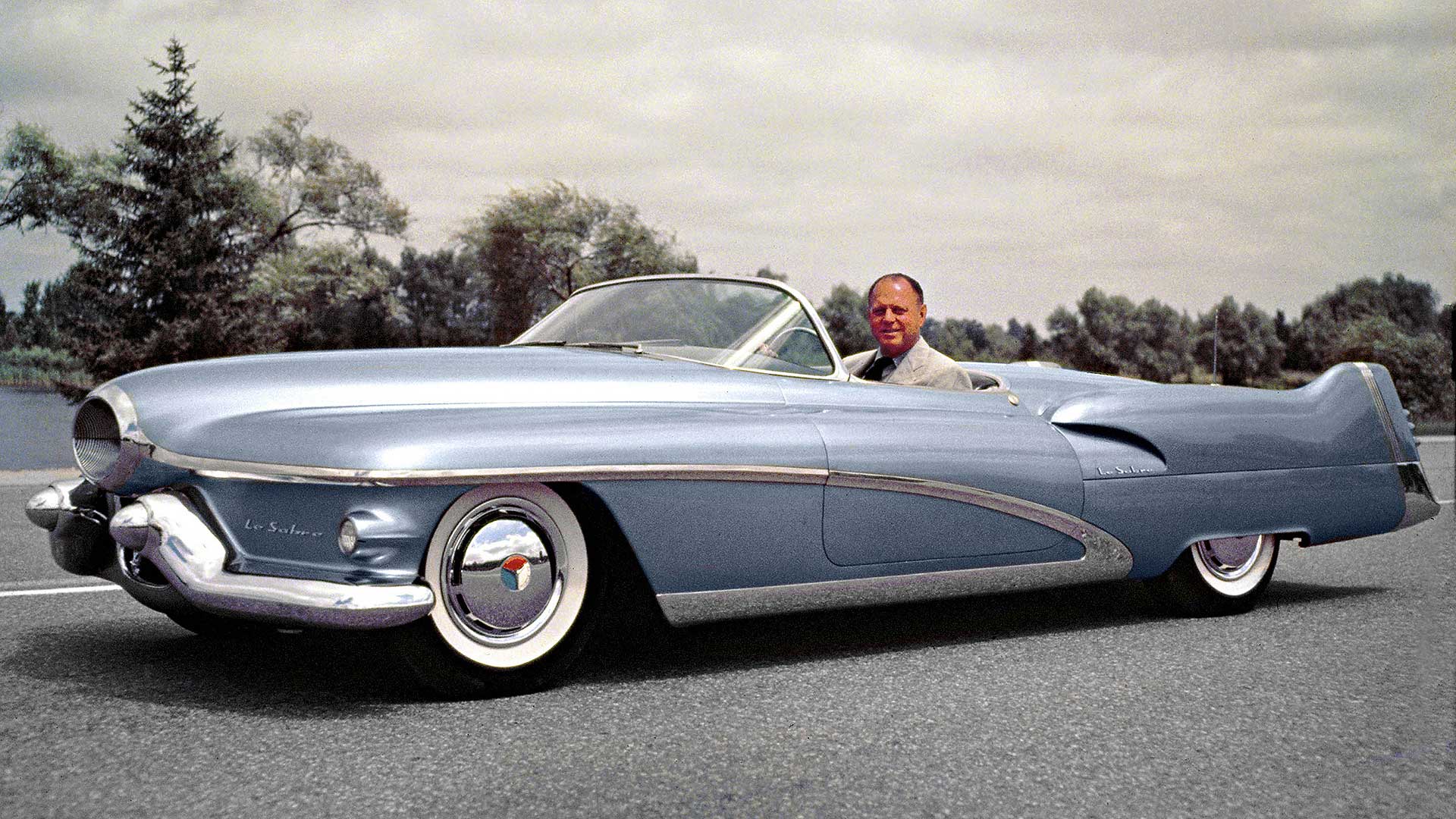
1951 LeSabre
© GMFamed GM designer Harley Earl dreamed up the LeSabre as a way to bring then-modern jet aircraft influences to the car. It featured 12-volt electrics, hydraulic jacks all around to lift the car as an aid to tire changes, and a moisture sensor to raise the top in case of rain. Earl used the car as a daily driver for years after its debut.
The LeSabre name was added to the Buick lineup for 1959.
-
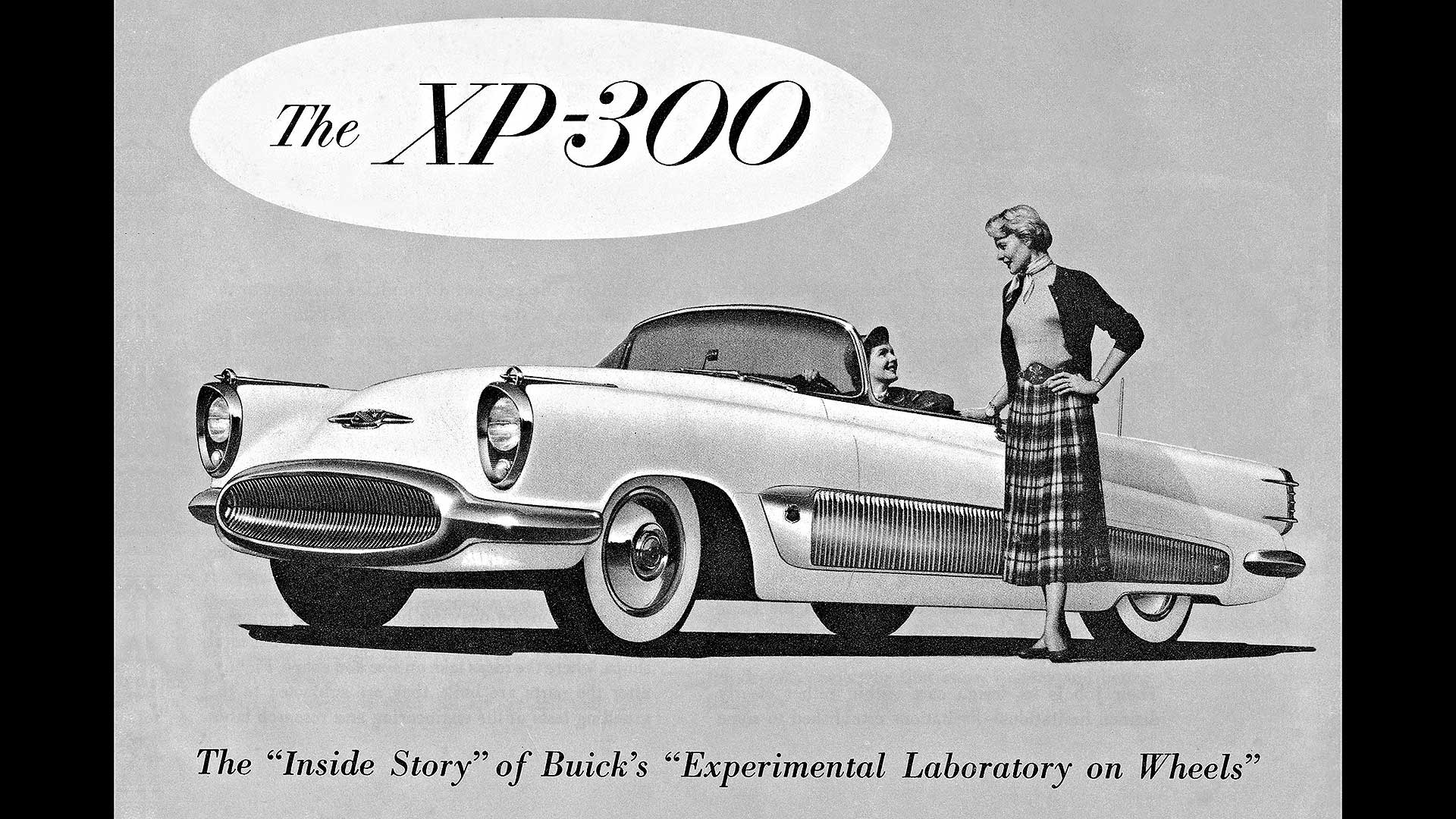
1951 Buick XP-300
© GMThe XP-300 was the brainchild of GM’s vice-president in charge of engineering, Charles Chayne. It was longer and lower than typical models of the day, and used aluminum body panels to reduce weight. The engine is a supercharged V8 good for 300 horsepower and, as reported by Chayne, propelled the XP to 140 mph.
The name is a combination of “experimental,” XP, and the horsepower rating.
-
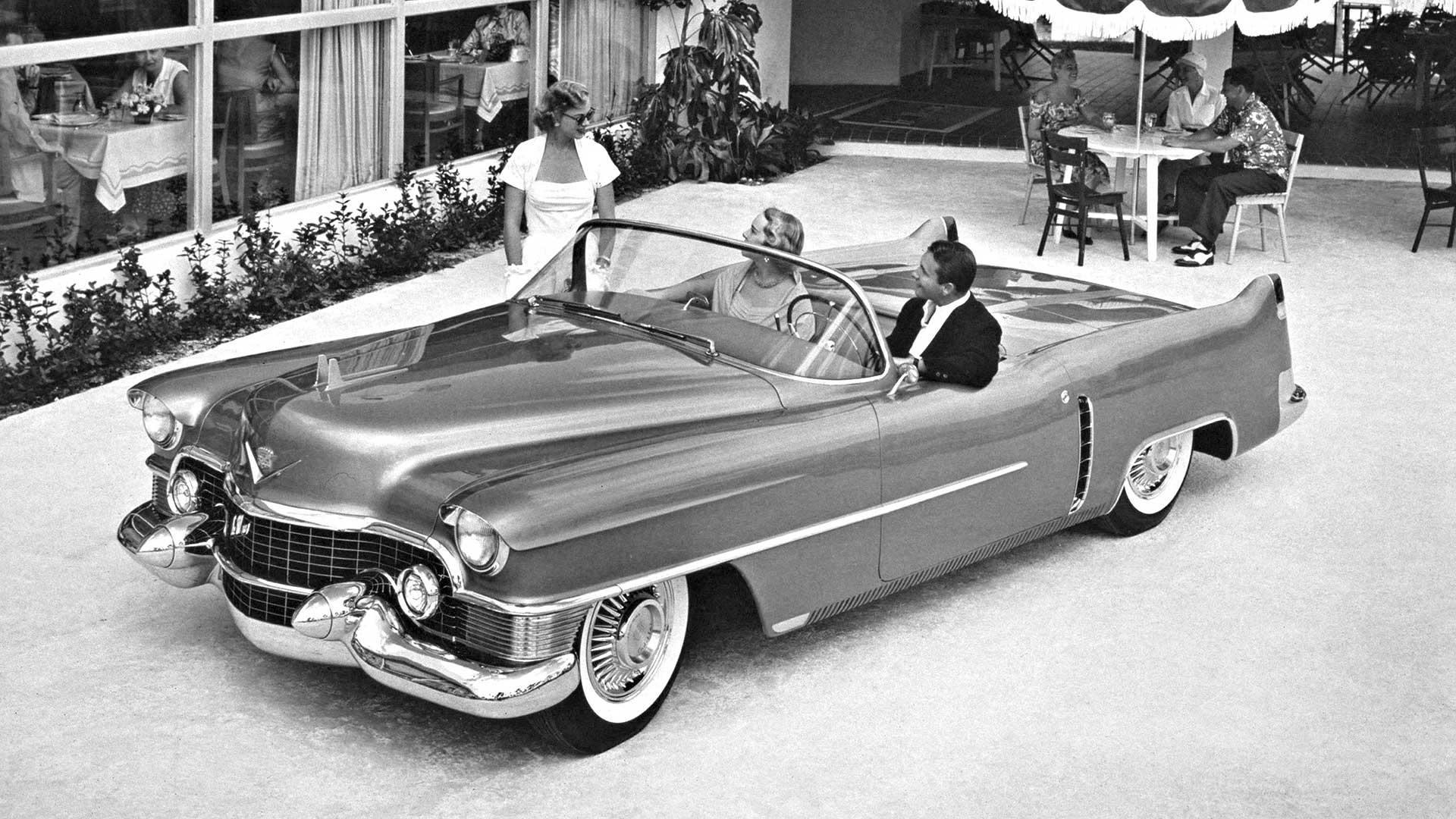
1953 Cadillac LeMans
© GMMillionaire Briggs Cunningham fielded two Cadillacs at the 24 Hours of Le Mans in 1950, giving Harley Earl’s concept its name. The LeMans was lower and wider than contemporary cars, seated two, and featured GM’s first wrap-around windshield. Styling cues from the concept appeared all through the Cadillac line in the 1950s.
-
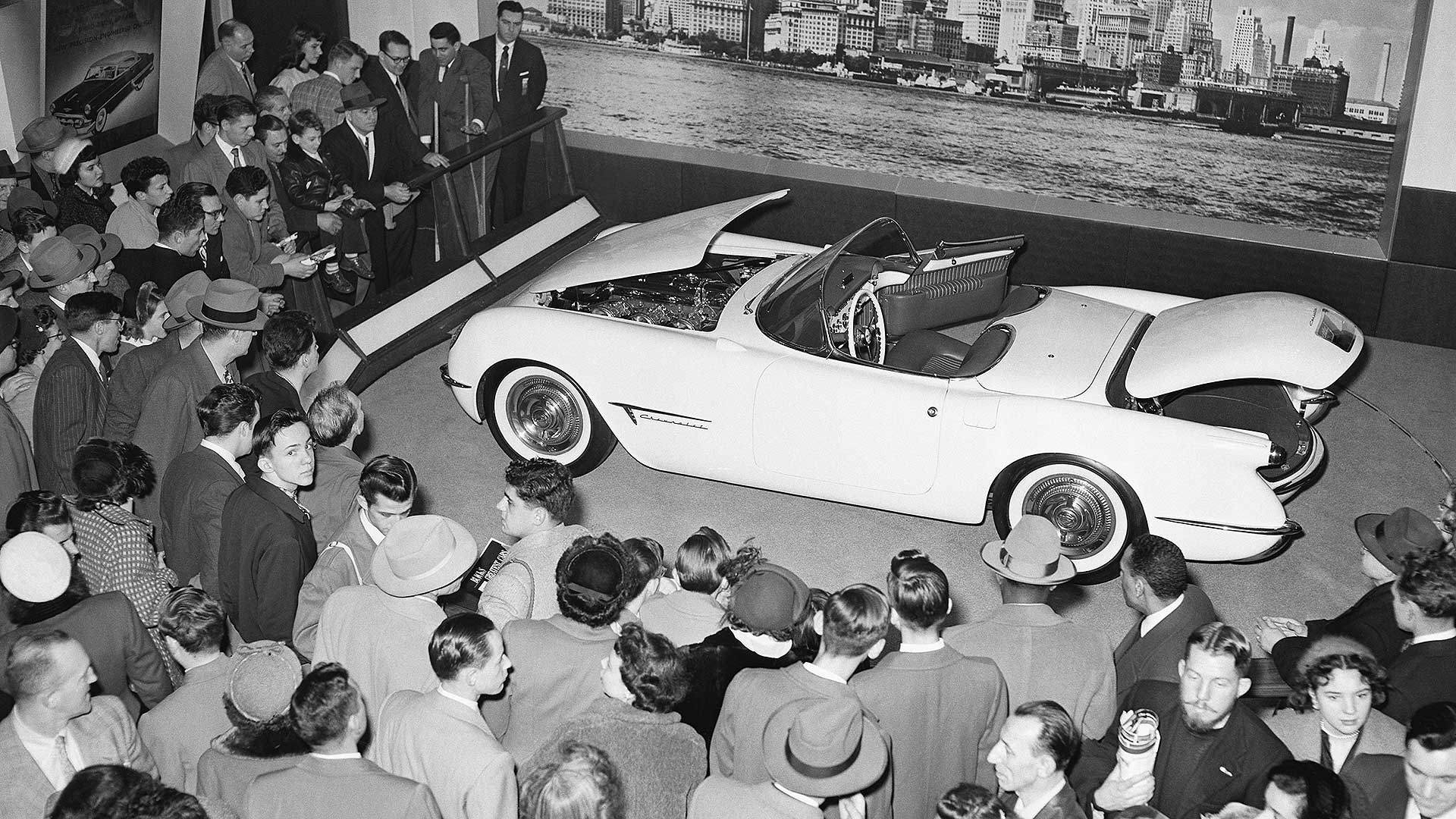
1953 Chevrolet Corvette
© GMThe crowd thronged the Corvette concept car at the January 1953 Motorama show at the Waldorf Astoria Hotel in New York. GM rushed the concept in production in June of the same year, making a total of 300 units for ‘53.
The rest is history.
-
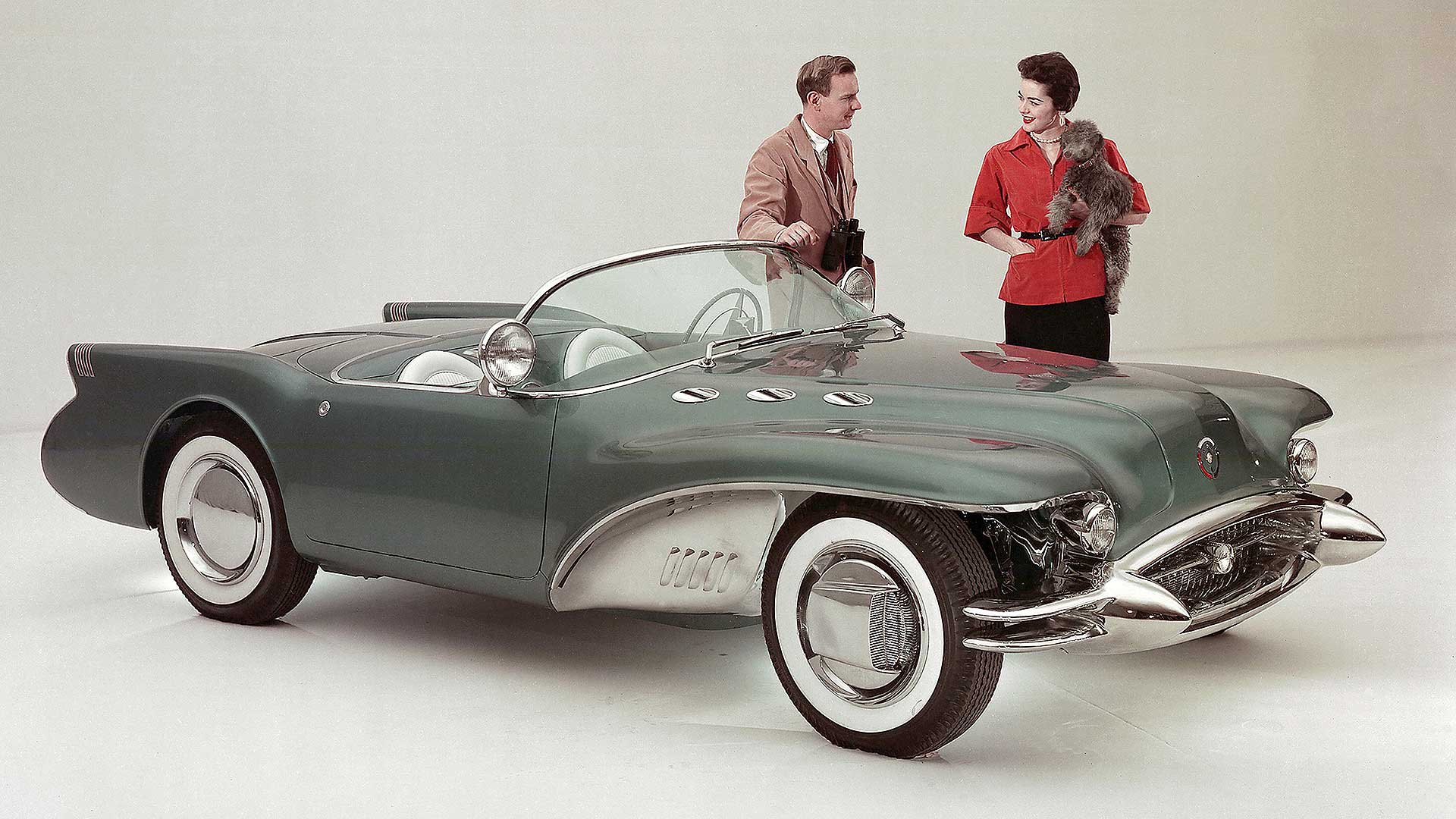
1954 Buick Wildcat II
© GMThe Corvette-based Wildcat II used a modified version of the company’s “Nailhead” V8 engine. The radical two-seater was developed to test the viability of a fiberglass body. The VentiPorts on the hood made sure it read as a Buick, while the gaping wheel wells drew attention to the scoops on the front wheels that provided flow to the air-cooled brakes.
-
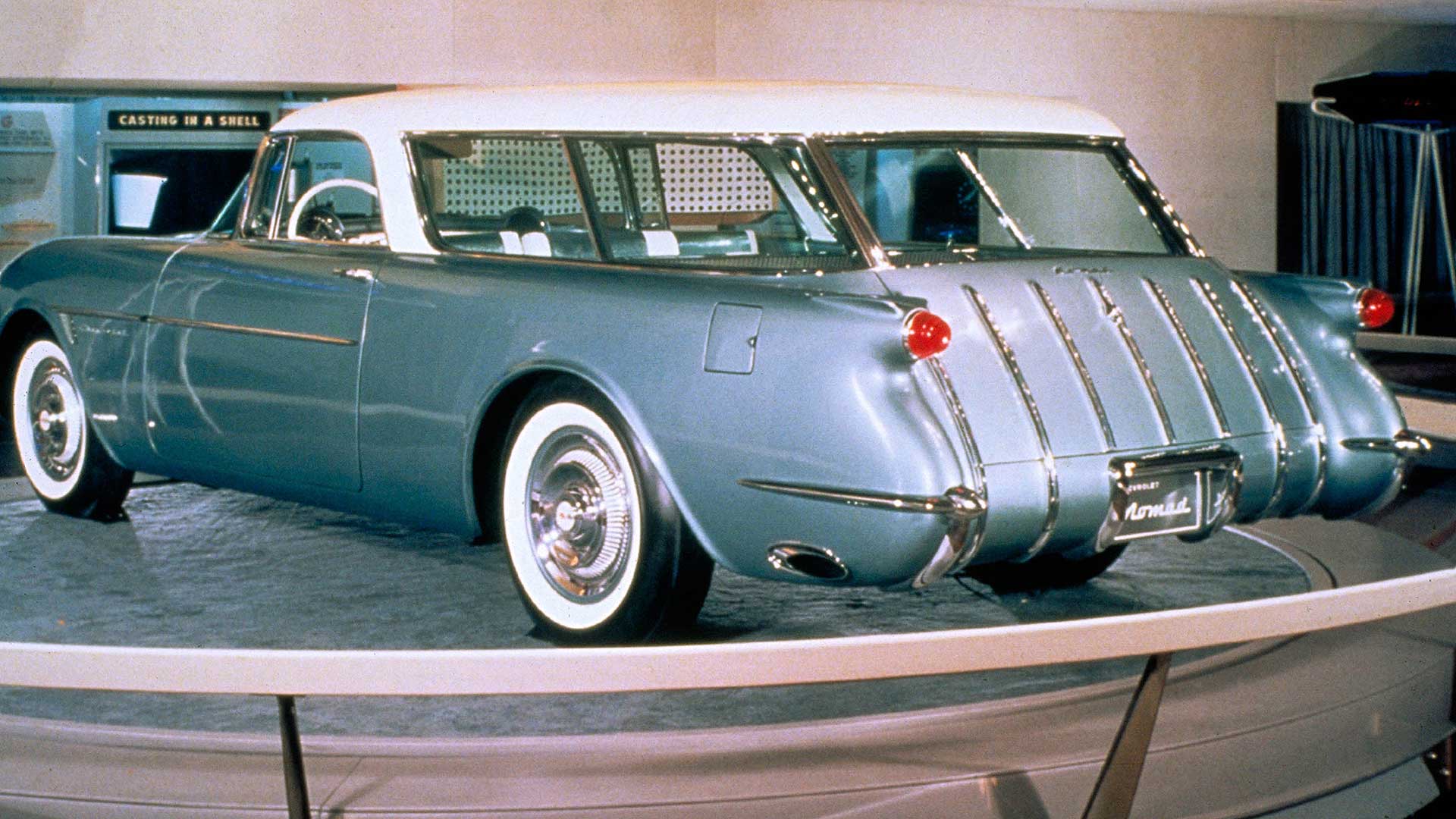
1954 Chevrolet Nomad
© GMThe second Corvette-based concept for 1954 was Chevy’s Nomad. The sporty fiberglass wagon seated six passengers in an unusually airy cabin. Up front was the trademark Corvette grille and round headlights mounted in curving fenders. In the rear, the glass retracted automatically when the tailgate was unlocked.
The public loved the Nomad when it debuted at the 1954 Motorama in New York City. Design Studio chief Harley Earl ordered and the name and many of the style elements applied to the famed production model 1955 Nomad, including the forward-sloping B-pillar.
-
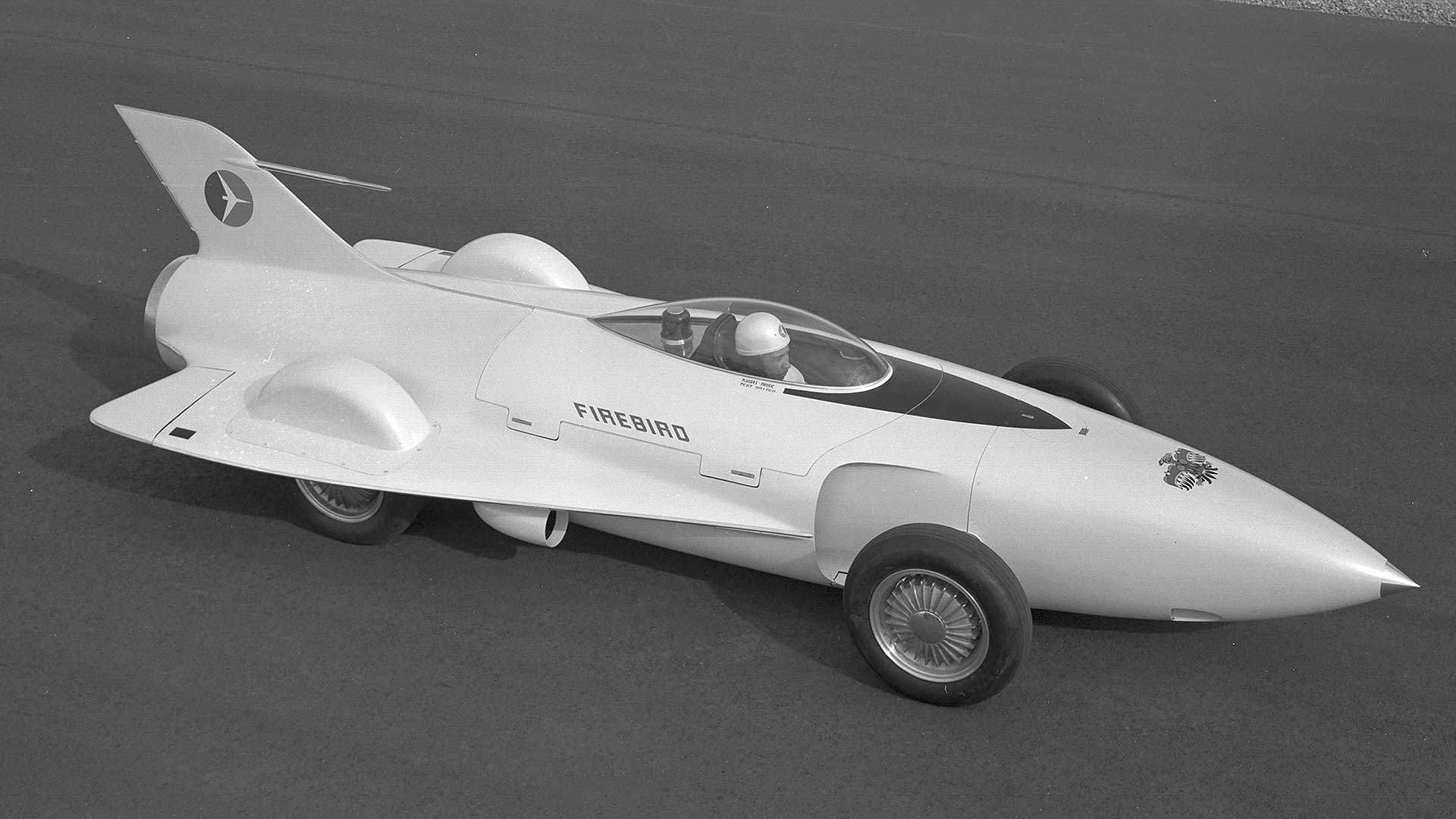
1954 GM XP-21 Firebird
© GMThe first Firebird was never intended for production, but designed to test the practical feasibility of using a gas turbine. The engine was developed by GM Research Laboratories Division and dubbed the “Whirlfire Turbo-Power.” It made 370 horsepower at 13,000 rpm and drove the rear wheels through a two-speed transmission.
The car was tested up to 100 mph, but the rear wheels broke traction upon shifting into second gear and the run was abandoned for safety reasons.
After the introduction of subsequent Firebird concepts, the XP-21 was commonly referred to as “Firebird I”
-
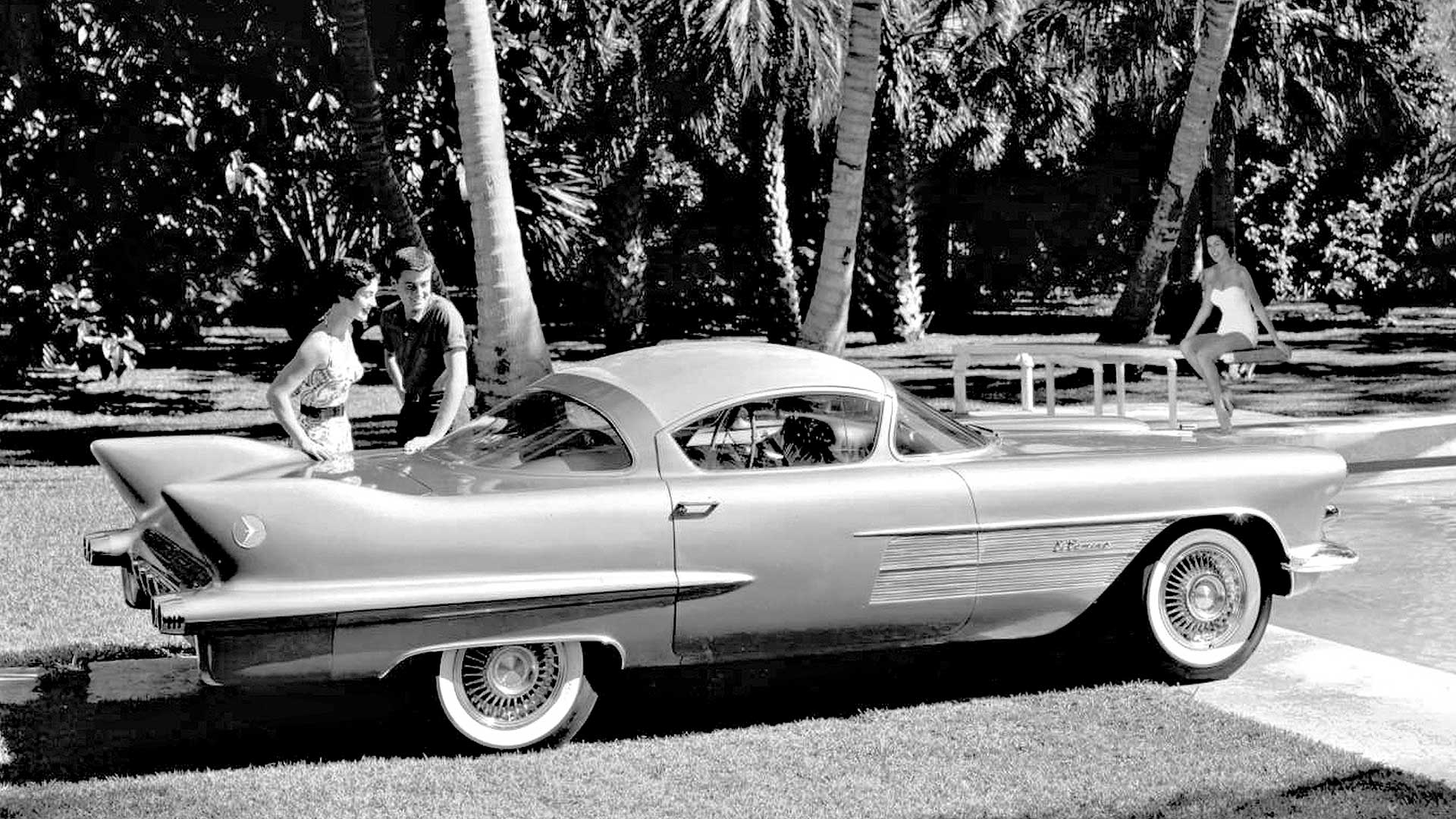
1954 Cadillac El Camino
© GMThe first El Camino was a 1954 Cadillac. First shown at the 1954 Motorama, it was a fiberglass-bodied, drivable two-seater that previewed much of the manufacturer’s styling that would appear later in the decade, such as quad headlights and whopping great fins.
The name El Camino means “royal highway” in Spanish, and was more famously used by Chevrolet for its car-based pickup beginning in 1959.
-
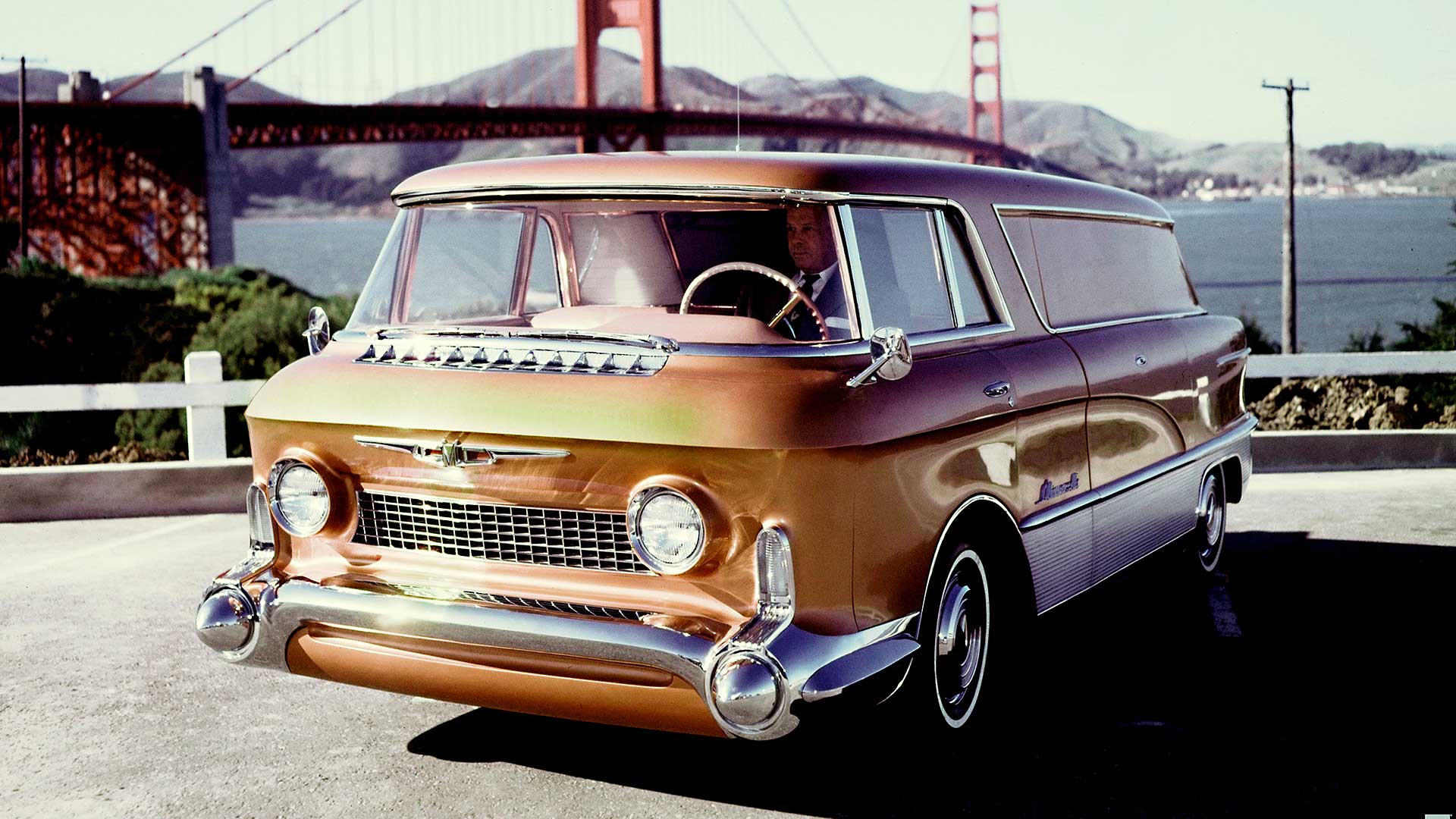
1955 GMC L’Universelle
© GMBack in 1955, a tightly-packaged front-wheel drive van was nothing short of revolutionary. The floor was low, allowing easy entry for passengers and cargo both. Its small body would hold a mammoth 173 cubic feet between the rear wheel wells.
The L’Universelle featured a Pontiac V8 coupled to a transaxle up front, with a complicated cooling arrangement that drew air from a roof vent behind the driver. A torsion bar suspension kept the ride smooth and was used later, albeit briefly, in GM light-duty trucks of the early 1960s.
-
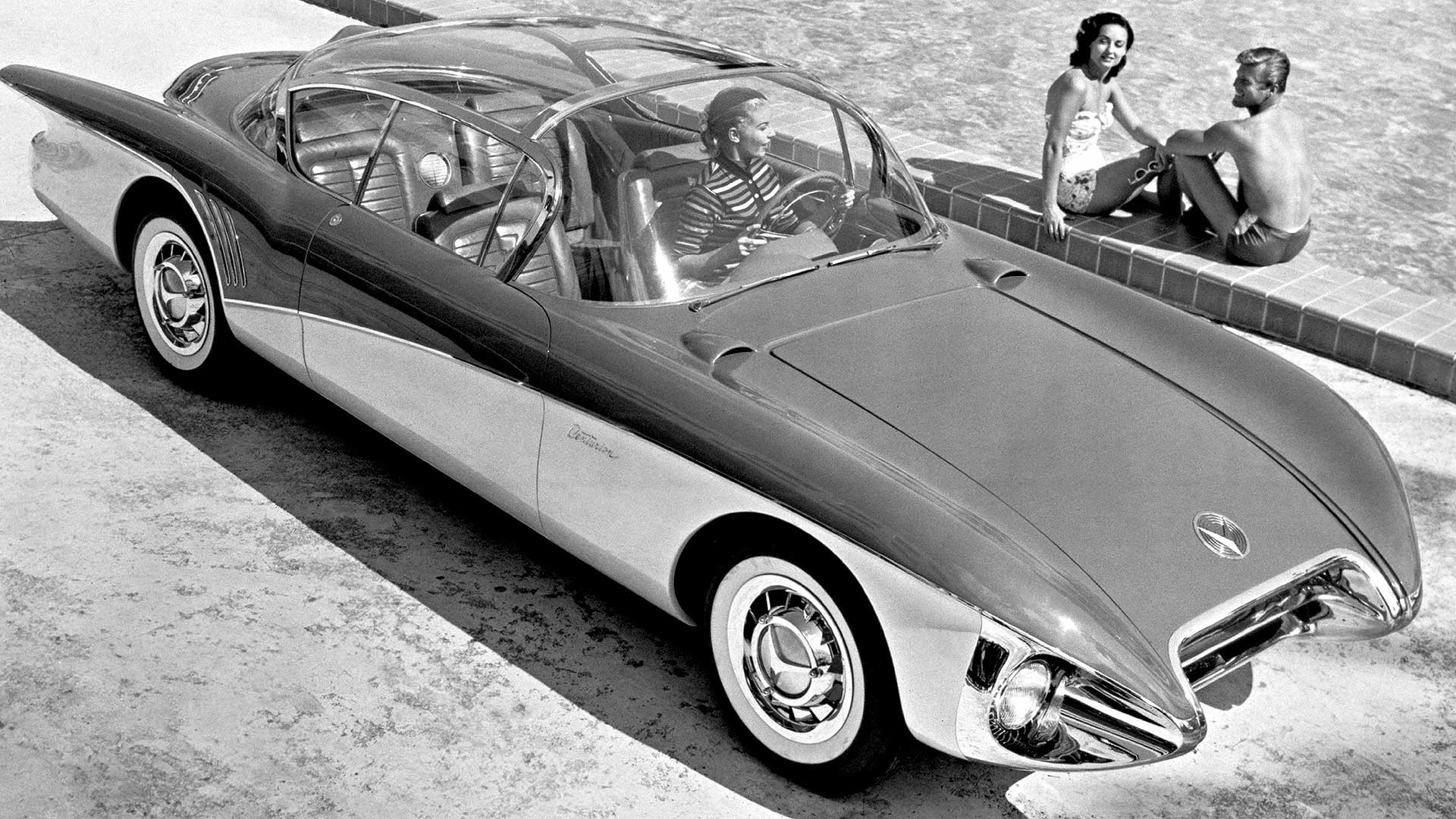
1956 Buick Centurion
© GMThe four-passenger 1956 Buick Centurion first appeared at the 1956 Motorama auto show. It prominently featured the aircraft-style bubble top beloved by 1950s designers, and the winged rear fenders previewed the new styling for ‘59 Buicks and Chevrolets.
The front seats would automatically slide back when the door was opened to allow easier entry to the red leather trimmed interior. The steering column was in the middle, with the wheel cantilevered to one side like an airplane. The scoops in front of the windshield provided fresh air to the passengers, while a rear-facing camera displayed through a television in the dash replaced the traditional rearview mirror.
-
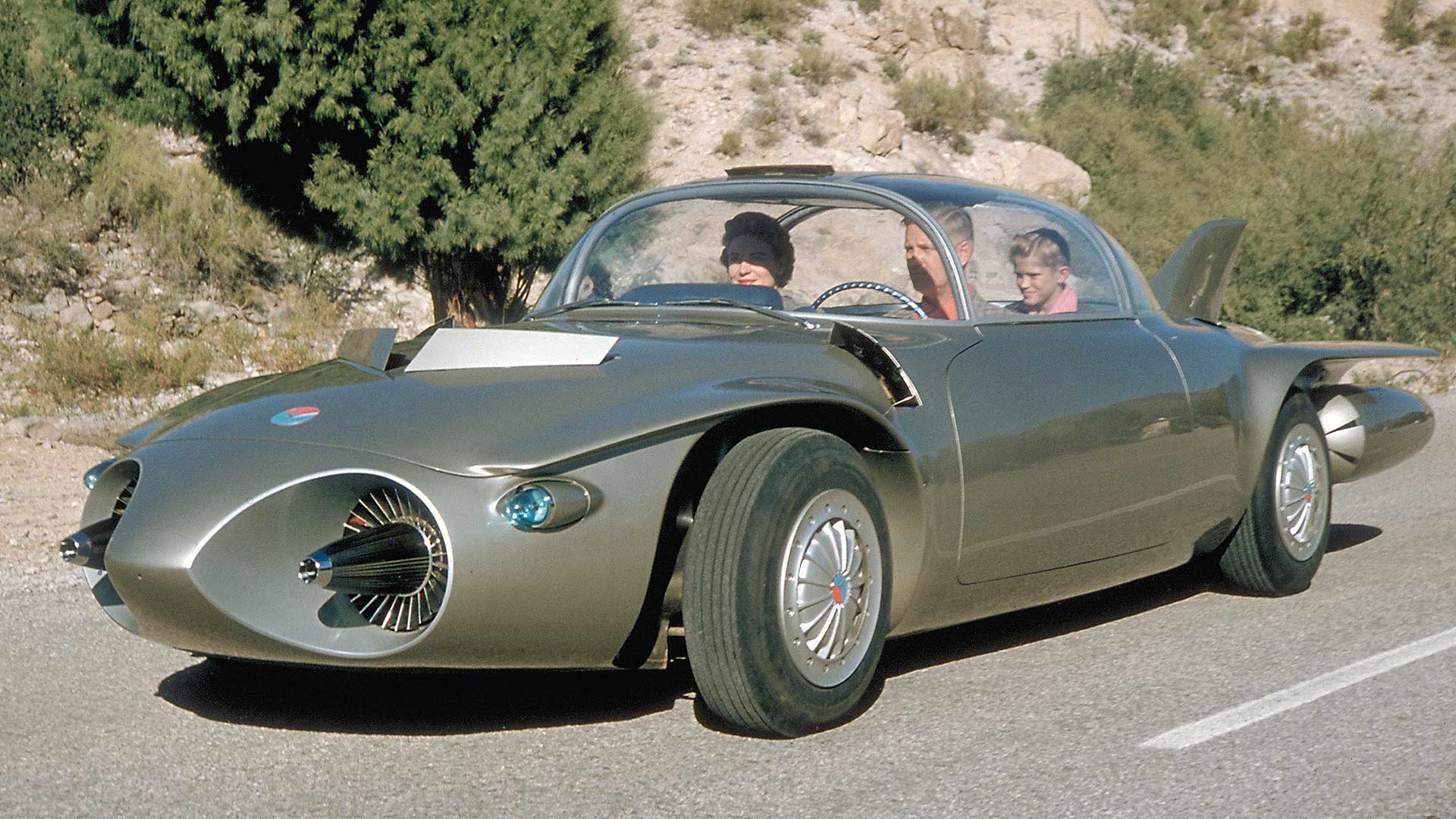
1956 Firebird II
© GMThe GM Firebird II was the turbine-powered successor to the famous Firebird I, designed to travel the “Safety Autoway” of the future. An electronic brain connected the car to a metallic conductor in the road, allowing autonomous travel for a family of four. Every passenger got individually adjustable reclining lounge seat and a snack table.
Firebird II featured such innovations as four-wheel independent suspension with automatic load-leveling, power disc brakes, electronic gear selection, and individually-controlled air conditioning.
-

1958 Firebird III
© GMThe double-bubble Firebird III had the distinction of two engines, a 10-horsepower gasoline engine to run the accessories, and a Whirlfire gas turbine for which the Firebirds are known.
In addition to a delightful amount of fins and winglets, the III was famous for Unicontrol, a centrally-located knob which allowed either driver or passenger to control acceleration, steering, and braking. Like many modern cars, the cockpit could be pre-conditioned, assuring that the interior was the desired temperature before the trip began.
-

1959 Cadillac Cyclone
© GMThe plexiglass canopy of the Cadillac Cyclone would automatically lift out of the way when either door was opened, and could fold completely away into a rear compartment when desired. The doors opened by sliding straight out, then smoothly back along the body. An intercom system allowed for communication with people outside the vehicle without the need to raise the canopy.
The giant nose cones on the front bumper housed radars that scanned the road ahead for any object in the vehicle’s path, and would alert the driver with an audible signal and warning light if something was detected.
The was Harley Earl’s last concept vehicle before his retirement.
-
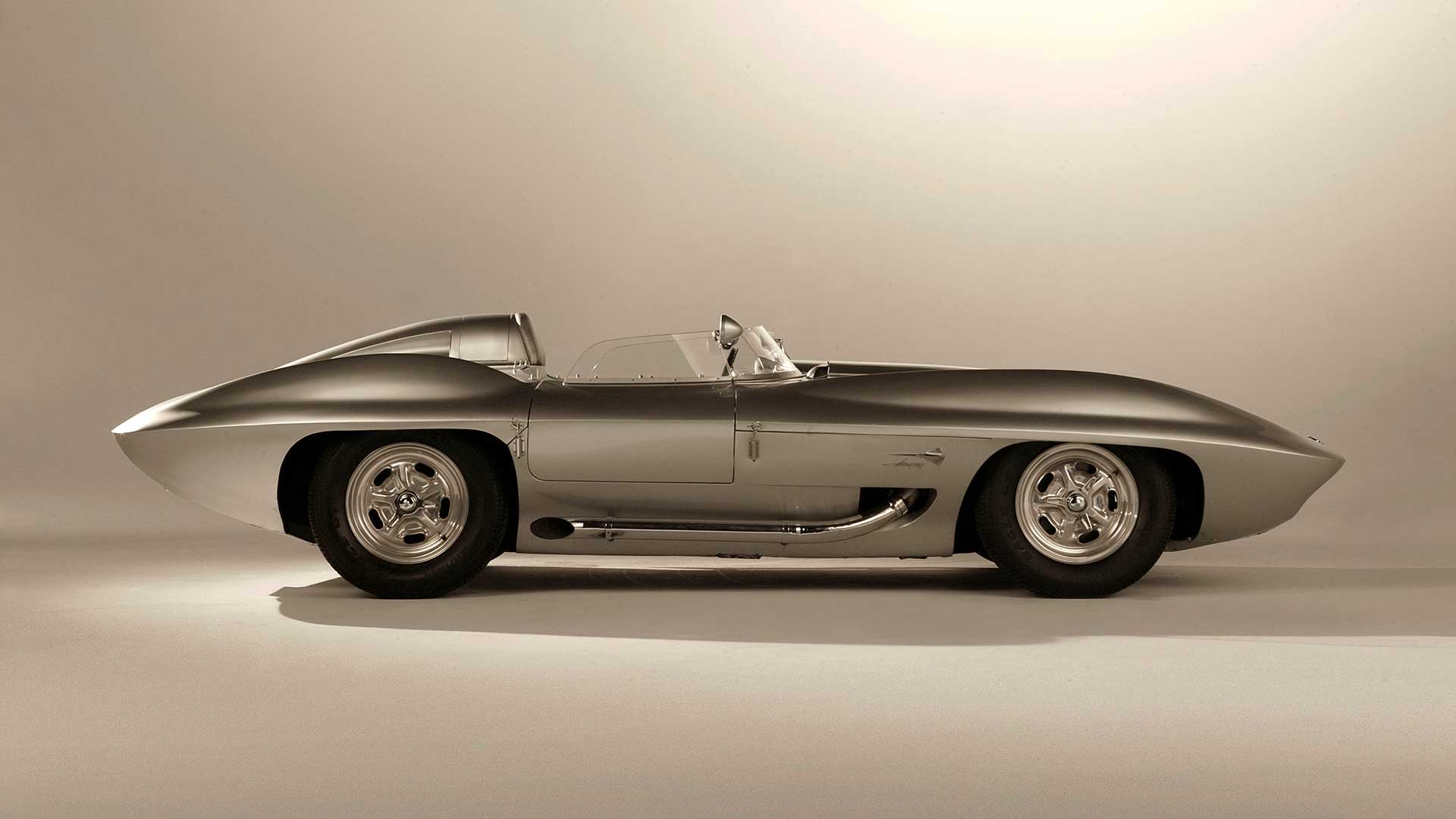
1959 Chevrolet Corvette Stingray Concept
© GMA 1957 Corvette competition project was abandoned due to a voluntary ban on manufacturer-sponsored racing. Bill Mitchell, GM Vice President of Styling, bought one of the ‘57 cars for one dollar and used the track-ready chassis as the basis for a new project.
The racing Stingray was created after hours by a team that included a young Larry Shinoda of ‘63 Corvette Stingray and Ford Boss 302 Mustang fame. A fuel-injected, 4.6-liter V8 nestled under the long hood and produced 311 horsepower. Because it was Mitchell’s private project rather than a sanctioned GM concept, the car made its debut at Maryland Marlboro Raceway rather than an auto show, and was successful enough throughout the season that GM bosses took interest and turned it into an official show car for the company.
-
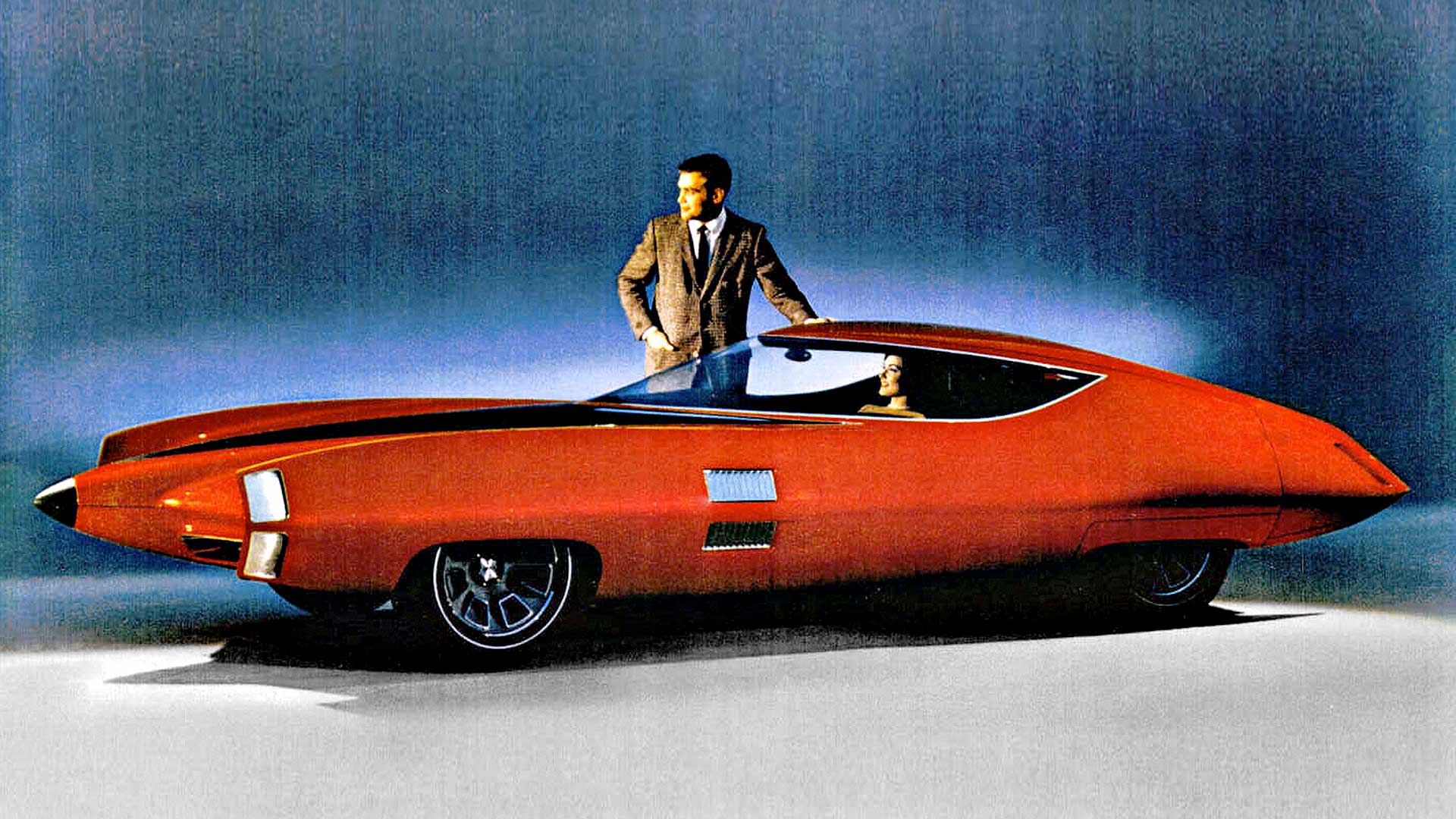
1963 GM-X
© GMThe aircraft-inspired GM-X had a yoke rather than a steering wheel and a dash littered with at least 16 gauges, while the roof held at least seven more. Controls in the center console mimicked thrust levers in jet aircraft, and myriad switches and control knobs over every other surface completed the look.
The car was shown as the GM-X Stiletto at the 1964 World’s Fair.
-
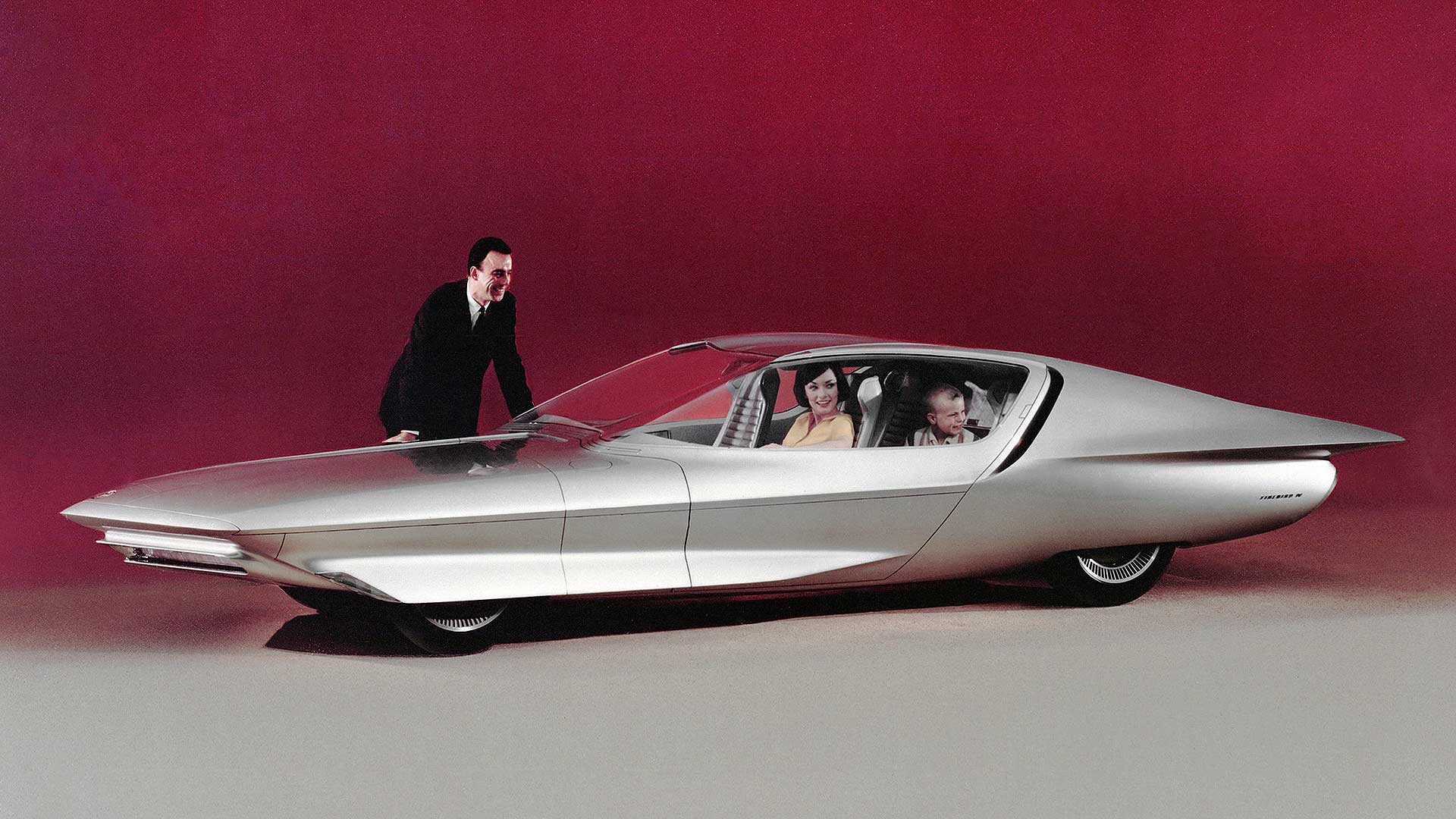
1964 Firebird IV
© GMThe Firebird IV was presented as part of “Tomorrowland” at the 1964 World’s Fair. It highlighted what could be possible on automatic highways. A punchcard would be inserted to program the car’s destination into its computer, and a large central display would plot the car’s progress. Transponders along a future highway also aided navigation.
An onboard television and refrigerator promised all the comforts of home during the journey.
-
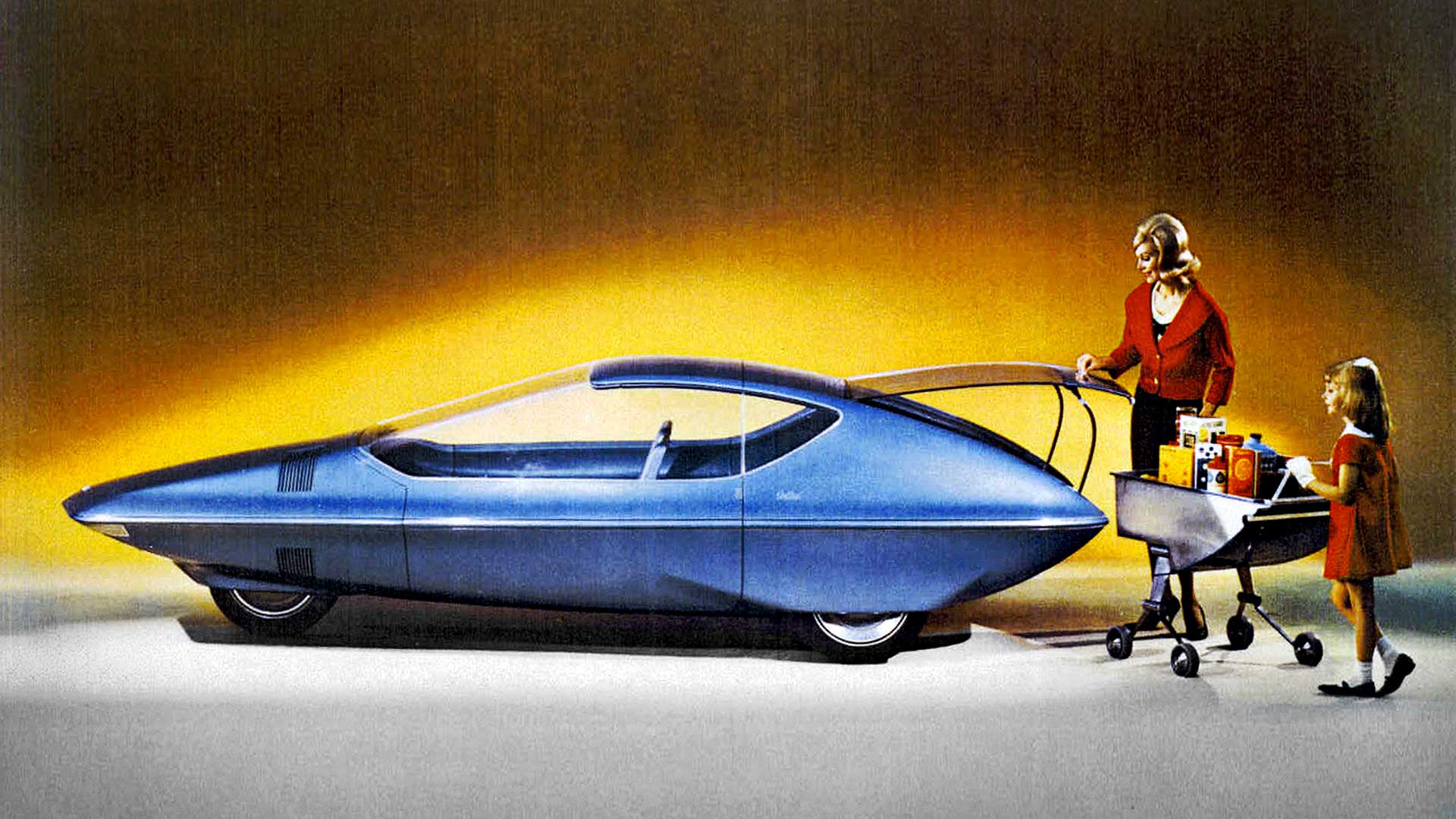
1964 GM Runabout
© GMThe three-wheeled Runabout Concept debuted at the 1964 World’s Fair and was designed to primarily appeal to women. It had two built-in shopping carts in the trunk, aiding in daily shopping. The nimble vehicle held two adults in front and three children in the rear, making it an ideal suburban commuter. The front wheel turned 180 degrees for easy parking.
The scant literature of the day also notes that men might find it a handy vehicle as well, as it had enough room for golf clubs.
-
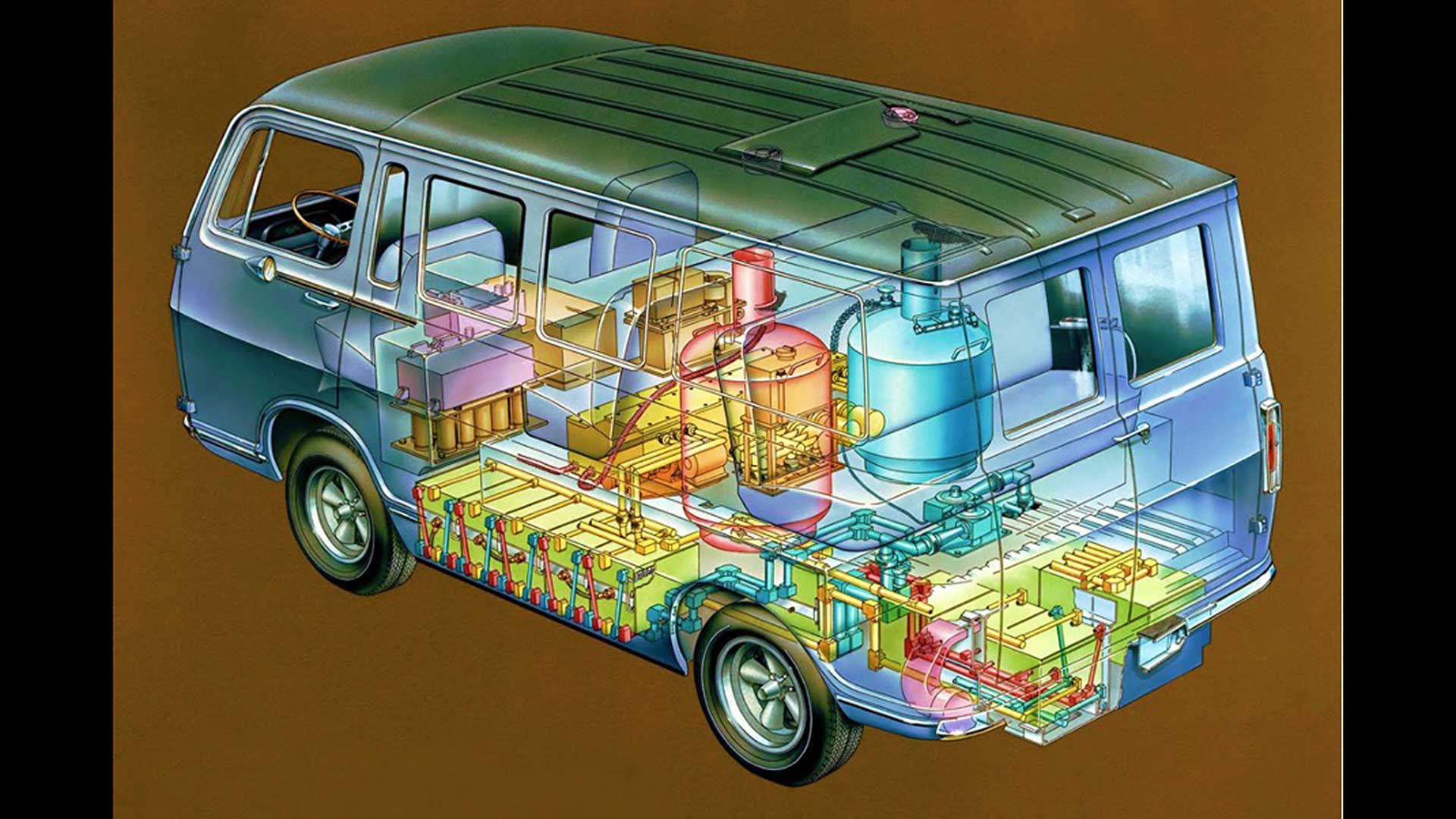
1966 GM Electrovan
© GMThe Electrovan was the world’s first Earthbound hydrogen fuel cell vehicle. The project transferred technology from the space program, and started when it became apparent that the new modules had enough power density to make a car possible.
Forty-five gallons of liquid electrolyte were needed to fill the modules, piping, and reservoir, bringing the total weight of the vehicle up to 7,100 pounds. It took 30 seconds to hit 60 mph and had a top speed of 70. Range was 150 miles, but it was only used on company property because of safety concerns.
-
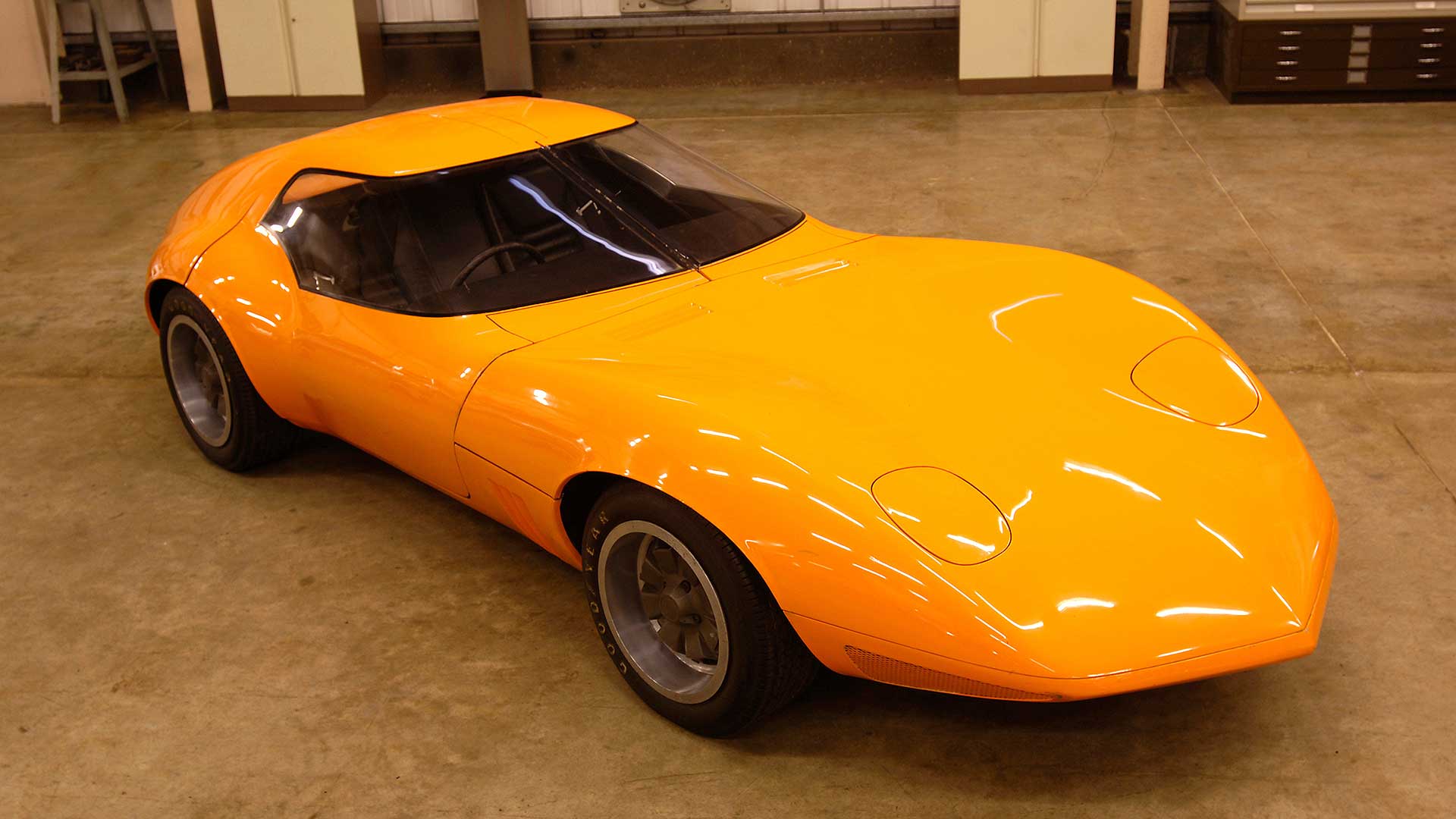
1966 Vauxhall XVR
© GMAcross the pond, GM subsidiary Vauxhall produced the sleek and futuristic XVR in a bid to improve the company’s sporting image. Sitting just 40 inches high and clearly taking design cues from the Corvette, the XVR featured a massive gullwing doors. Each half of the wraparound split windshield was part of the door, and would raise when in was opened.
For all its looks, power was a bit small by American standards of the day: just 71 horses from a 1.6-liter inline four.
-
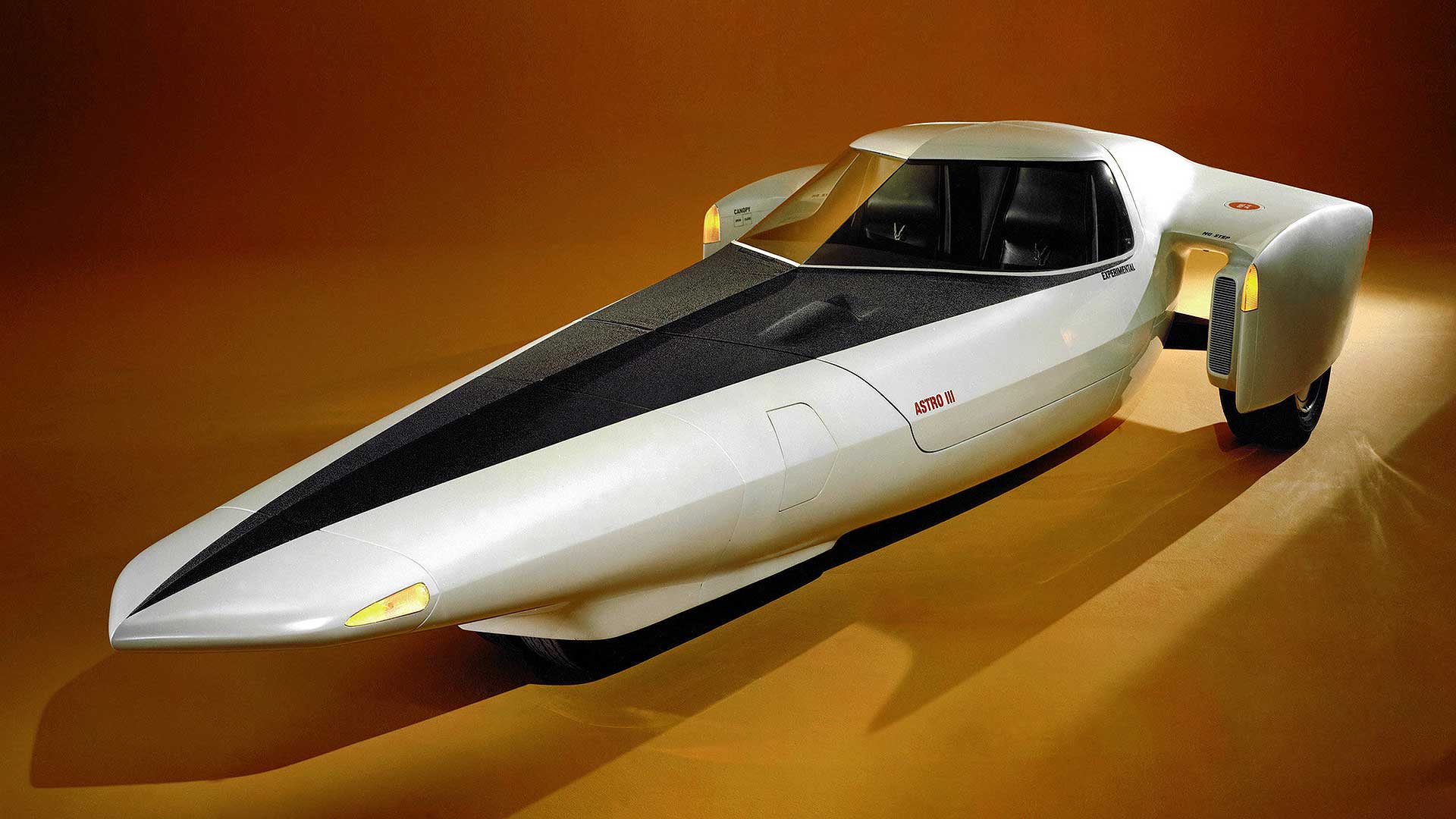
1969 Astro III
© GMSeating in the experimental Astro was exceptionally low to aid handling. Though it did have four wheels, two normally spaced in the back and two close together up front, a low center of gravity would have resisted the rollover forces that plague three-wheelers. It was envisioned as a vehicle for tightly restricted or automated highways of the future.
A gas turbine powered the car, weighing only 139 pounds but producing 317 horsepower.